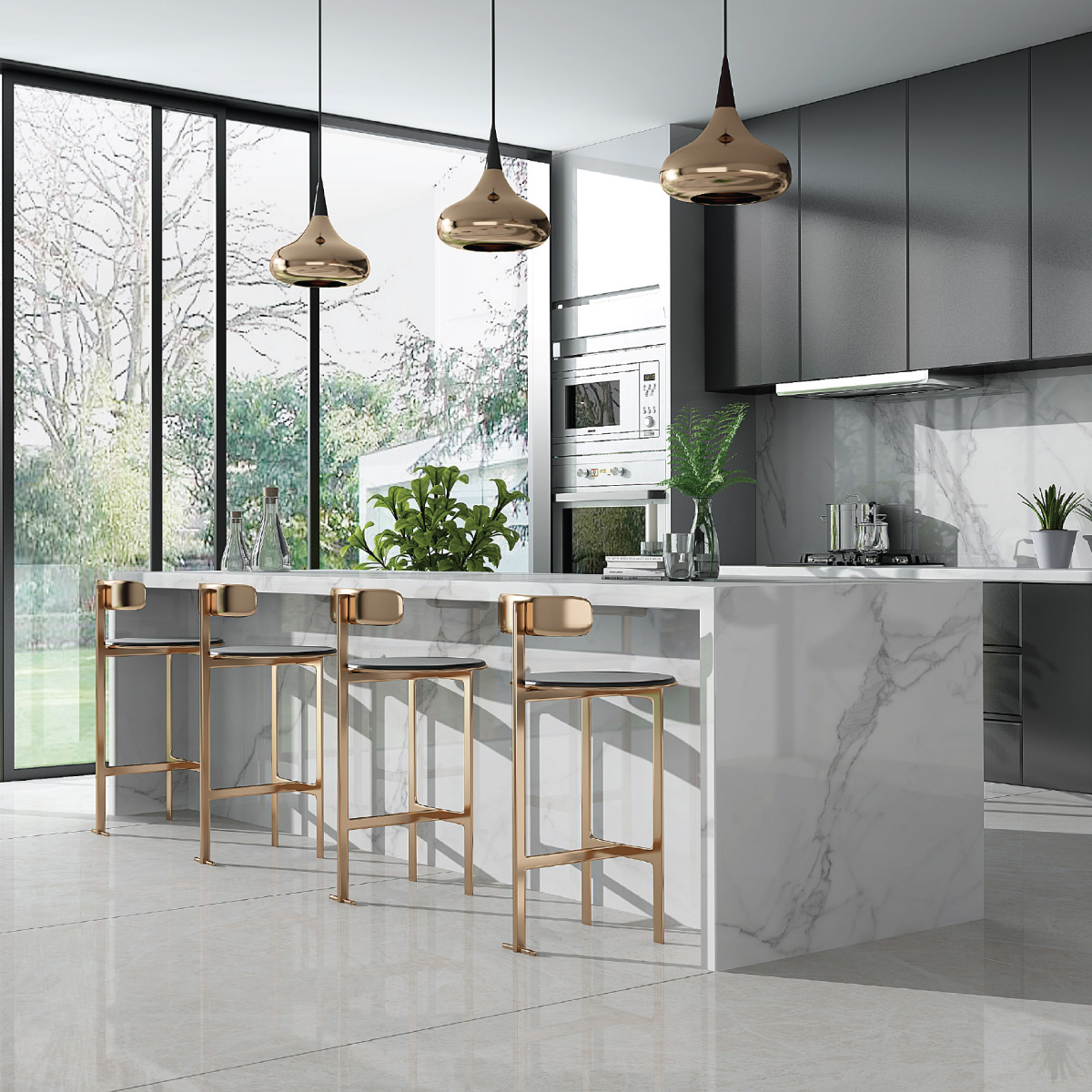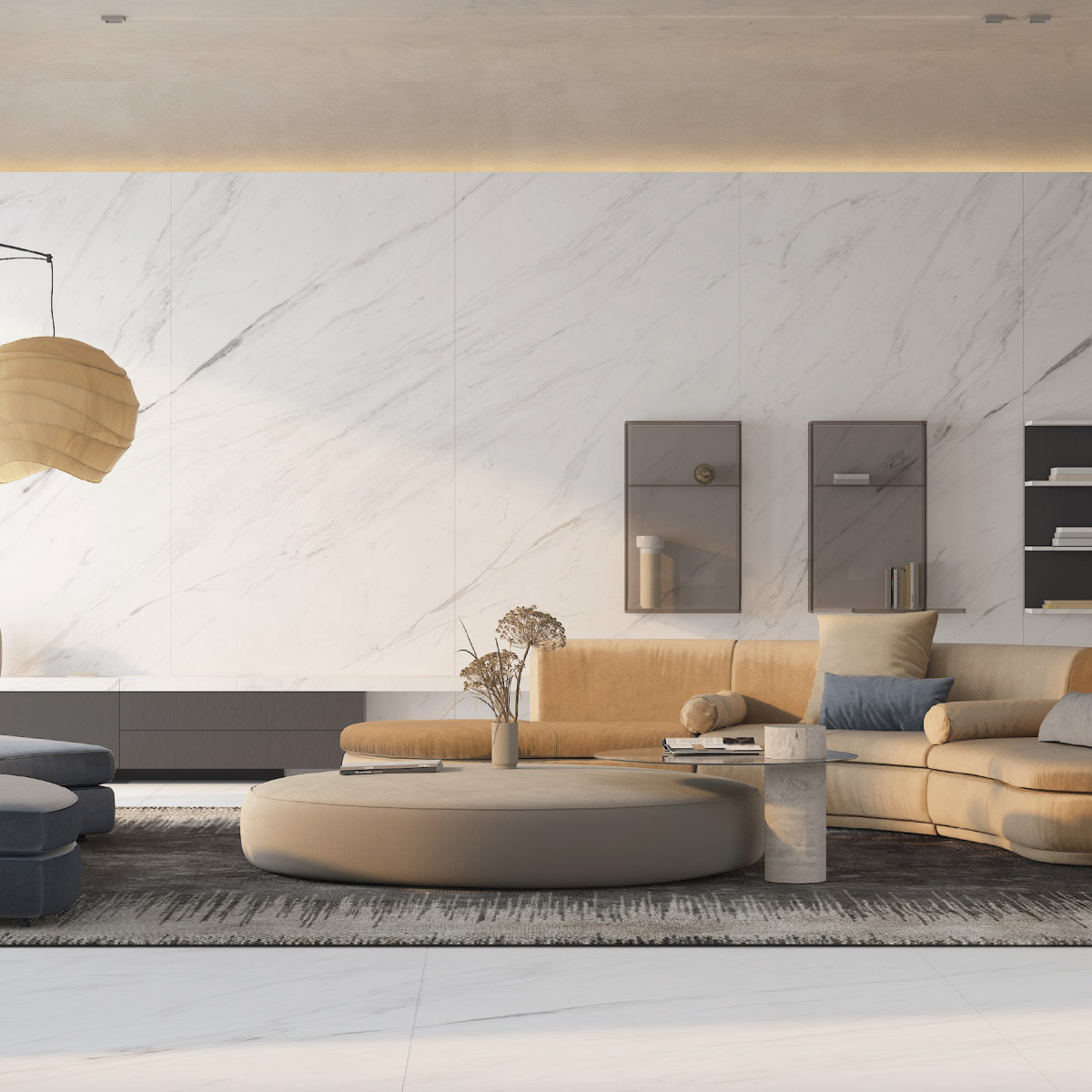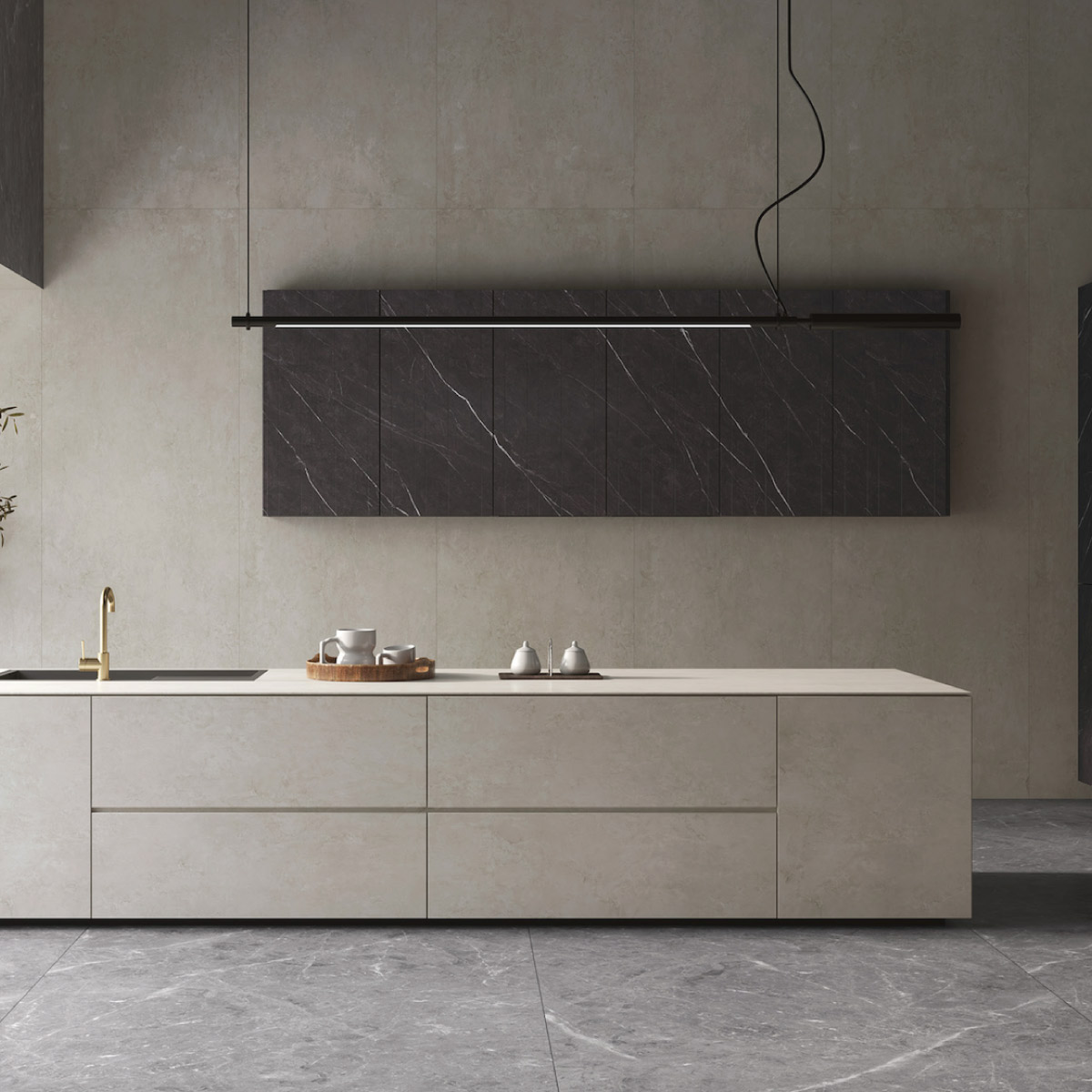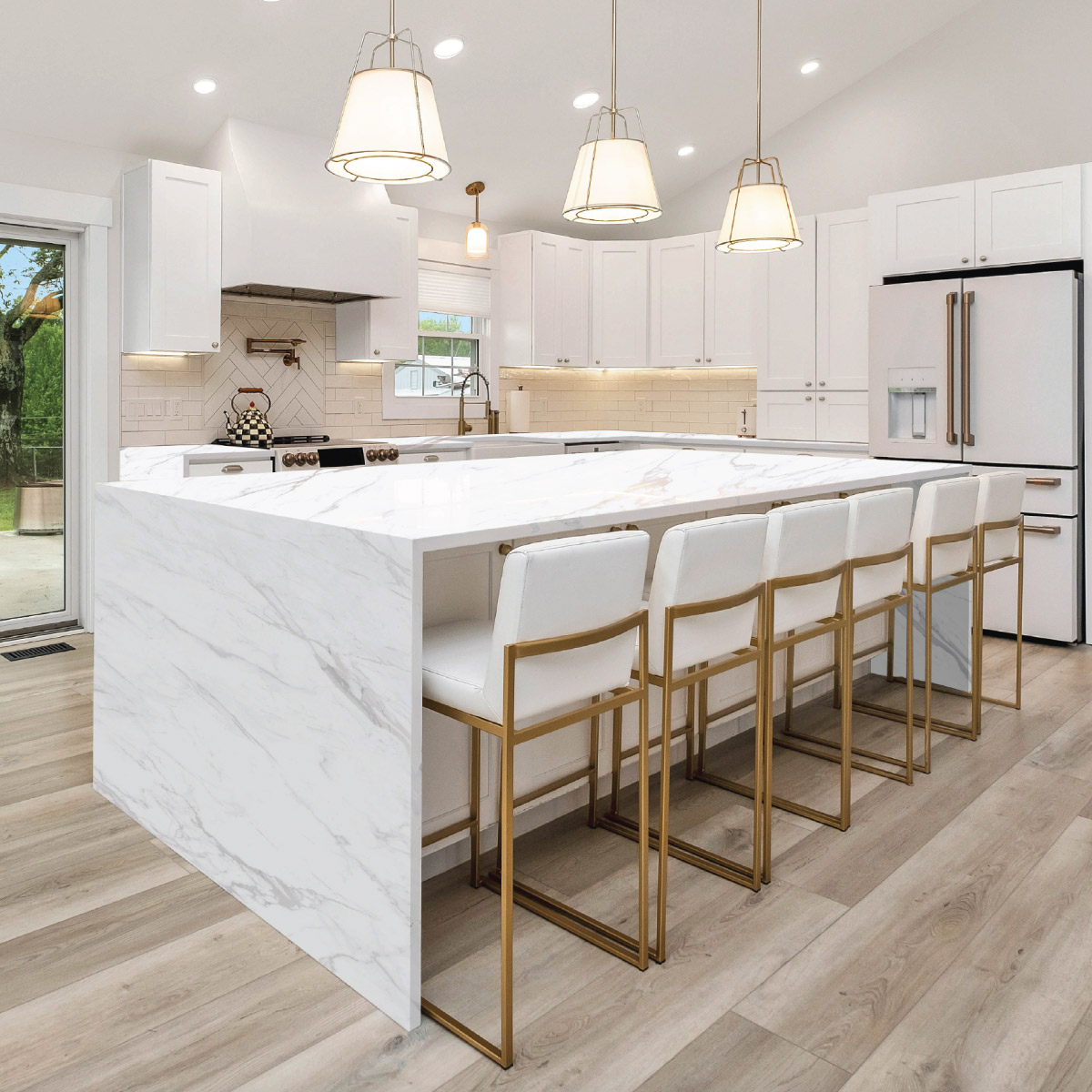Singaporeans take immense pride in their love for food, which naturally fuels a passion for cooking. Whether you’re a professional chef or a dedicated home cook, having the right tools and equipment is crucial for preparing mouthwatering dishes. One key element of any well-equipped kitchen is the countertop, and a game-changing material is making waves in Singapore – sintered stone.
Renowned for its exceptional durability, versatility, and elegant design, sintered stone is becoming a top choice among homeowners and interior designers in Singapore. In this guide, we’ll dive into what sintered stone is, its advantages and disadvantages, and how it stacks up against popular alternatives like quartz and granite.
In this guide, we’ll dive into what sintered stone is, its advantages and disadvantages, and how it stacks up against popular alternatives like quartz and granite.
What is Sintered Stone?
Sintered stone is a type of custom-made stone made from a mixture of natural minerals, such as quartz and feldspar, and pigments. The mixture is then compressed and heated at extremely high temperatures, up to 1200°C, resulting in a dense, durable material that is resistant to scratches, stains, and heat.
It is made by grinding and compressing natural minerals such as quartz, porcelain, and glass under high pressure and temperature. The resulting mixture is then poured into a mould and fused together to create a solid slab of sintered stone. This process is called ‘sintering‘.
Sintered stone is known for its resistance to scratches, stains, heat, and UV rays, making it an ideal choice for high-traffic areas like kitchens and bathrooms. Sintered stone is also non-porous, which means that it does not absorb liquids, making it hygienic and easy to clean.

Pros of Sintered Stone
Highly Durable
One of the biggest advantages of sintered stone is its durability. The high temperatures used in the manufacturing process make it extremely hard and resistant to damage, making it perfect for high-traffic areas like kitchens and bathrooms.
It is also resistant to UV radiation, which means it won’t fade or discolour over time.
Versatile
Sintered stone comes in a variety of colours and patterns, making it a versatile choice for any design aesthetic. Whether you prefer a classic marble look or a modern concrete finish, sintered stone can be customised to fit your style.
Eco-friendly
Sintered stone is also eco-friendly. It is made from natural minerals and does not contain any harmful chemicals or pollutants, making it a safe choice for your home and the environment.
Low Maintenance
Unlike natural stone, sintered stone does not require sealing or special cleaning products to maintain its appearance. It is easy to clean with soap and water, and its non-porous surface means that it won’t harbour bacteria or mould.
Heat Resistance
Sintered stone is highly resistant to heat, making it a safe choice for use near stovetops and other high-temperature appliances. It can withstand temperatures up to 1200 degrees Celsius without cracking or discolouring.
Scratch & Stain Resistant
Sintered stone is also highly resistant to scratches and stains, making it a practical choice for busy kitchens and bathrooms. It is less likely to chip or crack than natural stone, and its non-porous surface means that it won’t absorb spills or stains.
Cons of Sintered Stone
Can be Difficult to Repair
While sintered stone is highly durable, it is also difficult to repair if it does become damaged. Unlike natural stone, which can be polished or refinished to remove scratches or stains, sintered stone cannot be repaired in the same way. This means that if a sintered stone countertop becomes chipped or cracked, it will likely need to be replaced entirely.
Can be Costly
One of the main disadvantages of sintered stone is its cost. While it may be more affordable than natural stone like granite or marble, it is still more expensive than materials like laminate or solid surface.
This means that homeowners who are on a tight budget may need to consider other options.
However, it is important to consider the long-term benefits of investing in a durable and long-lasting material like sintered stone, which can save you money in the long run by not having to replace it as frequently.
Heavy
Another potential disadvantage of sintered stone is its weight. It is a dense material, meaning it can be heavy and may require additional support structures. This can add to the overall cost of the project and may limit the types of cabinets or bases that can be used with sintered stone countertops.

Comparing Sintered Stone
Sintered Stone vs. Quartz
Quartz is another popular material for kitchen and bathroom countertops. Like sintered stone, it is a customised stone made from a mixture of natural minerals and pigments. However, there are some key differences between the two materials.
One of the main differences is the manufacturing process. Sintered stone is made by compressing and heating the mixture of minerals and pigments, while quartz is made by combining the minerals and pigments with a binding resin and then curing it in an oven. This means that sintered stone is a denser and more durable material than quartz.
Another difference is the appearance. Sintered stone has a more natural look, with variations in colour and pattern that mimic the look of natural stone. Quartz, on the other hand, has a more uniform appearance, with consistent colour and pattern throughout.
However, since both are custom-made stones, they are more similar than you would think.
Both sintered stone and quartz are excellent countertop materials that offer durability, low maintenance, and resistance to scratches, stains, and heat. The choice between the two ultimately comes down to personal preference and budget. If you’re looking for a wider range of colours and patterns, sintered stone may be the better choice, but if affordability is a concern, quartz is a great option.

Sintered Stone vs Granite
Granite is a natural stone that has been a popular choice for countertops for many years. You might have seen it around in many older HDB homes. Most granite countertops have very eye-catching and striking designs. It is also known for its durability and natural beauty. However, there are some drawbacks to using granite as a countertop material.
One of the main disadvantages of granite is its porosity. It is a natural stone, which means that it can absorb liquids and stains if not properly sealed. Sintered stone, on the other hand, is non-porous, making it more hygienic and easier to clean.
Another disadvantage of granite is its maintenance. It requires regular sealing and polishing to maintain its appearance and prevent damage. Sintered stone, on the other hand, requires very little maintenance and is resistant to scratches and stains.
One of the biggest advantages of sintered stone over granite is its durability. Sintered stone is highly resistant to scratches, stains, and heat, making it an ideal choice for high-traffic areas like kitchens and bathrooms. Granite is also durable, but it requires regular sealing to prevent staining and can be susceptible to chipping or cracking.

Sintered Stone vs Terrazzo
Terrazzo is a classic material that has been used for centuries. It is made by mixing chips of marble, granite, or glass with cement or epoxy resin. The result is a unique and customisable material that can be made in a variety of colors and patterns.
One of the biggest advantages of terrazzo is its durability. It is resistant to scratches, stains, and heat, and can last for decades with proper care. It also has a softer feel than sintered stone, which may be more appealing to some homeowners.
Another advantage of terrazzo is its versatility. It can be used for countertops, floors, and even walls, making it a popular choice for commercial and residential spaces alike.
However, terrazzo does have its drawbacks. Unlike sintered stone, it is a porous material, which means it can absorb liquids and bacteria if not properly sealed. It also requires more maintenance than sintered stone, as it can be prone to staining and chipping.

Why Singaporeans Are Choosing Sintered Stone
With the growing demand for practical, stylish, and long-lasting materials in modern homes, sintered stone is quickly gaining traction in Singapore — especially among homeowners upgrading their BTOs, resale flats, and condos. Here’s why it’s becoming the go-to surface:
Effortless to maintain during festive prep
From Chinese New Year steamboat dinners to Hari Raya baking marathons and Deepavali cooking sprees, sintered stone holds up beautifully. It resists turmeric, oil, vinegar, and sauce stains — all common in Singaporean kitchens — and wipes clean in seconds.
Ideal for clean, hygienic cooking spaces
Sintered stone is non-porous and bacteria-resistant, making it a great choice for families who care about food hygiene. It’s especially useful in Muslim-friendly kitchens where cross-contamination needs to be avoided during halal food preparation.
No lingering odours
Cooking belachan, curry, or sambal? Unlike porous surfaces, sintered stone doesn’t absorb smells — so your kitchen stays fresh even in a compact HDB or condo layout.
Increases the resale appeal of your home
In Singapore’s competitive housing market, a sleek, seamless sintered stone kitchen is a strong selling point. Whether you’re upgrading your flat for long-term enjoyment or preparing to sell, this material boosts both aesthetic and functional value.
Is Sintered Stone Right for You?
Sintered stone is a durable, versatile, and eco-friendly material that is becoming a popular choice for kitchen and bathroom countertops.
While it may be more expensive than some other materials, its long-term benefits make it a worthwhile investment. Compared to other materials like quartz and granite, sintered stone offers unique advantages in terms of durability, appearance, and maintenance.
If you’re looking for a high-quality countertop material that will stand the test of time, consider Mysa, Aurastone’s range of premium sintered stone.


